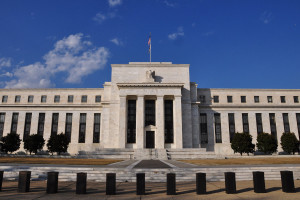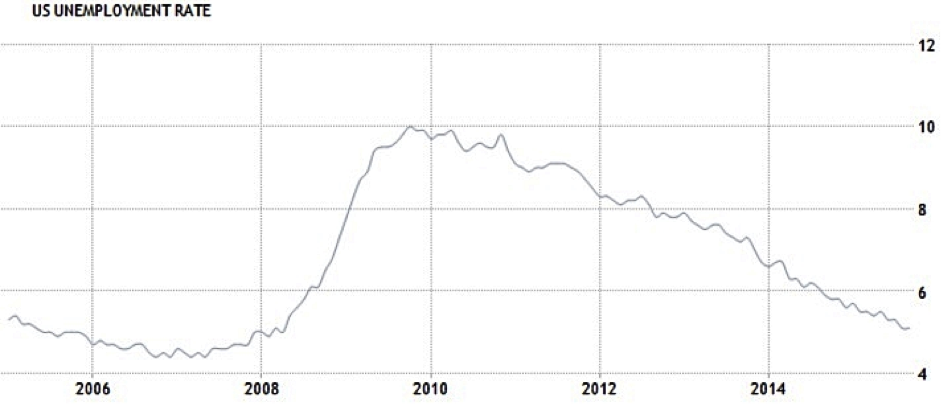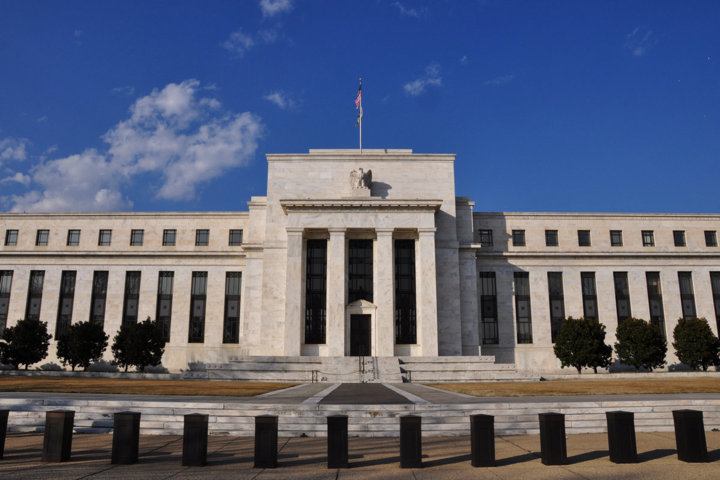 Following its latest monetary policy meeting, which ended on October 28, the Federal Reserve decided to keep interest rates near the zero mark, the same as it has done for the last seven years.
Following its latest monetary policy meeting, which ended on October 28, the Federal Reserve decided to keep interest rates near the zero mark, the same as it has done for the last seven years.
The Fed has a dual mandate: to keep inflation near 2% and to achieve sustainable economic growth and full employment. Given that the annual inflation rate was 0% for September, and indeed fell by 0.2% from August, there is negligible justification from a purely inflation-based perspective for rates to be raised. Similarly, GDP growth has weakened from 2.7% to 2.0% between the second and third quarters of the year; and although unemployment is gradually heading towards pre-crisis levels (at 5.1% in both August and September, and 5.0% in October), the last three jobs reports have all been subsequently revised lower. Employment, therefore, perhaps needs to stabilize further before the Fed sees that as the deciding factor in implementing contractionary monetary policy.

Source: Trading Economics | US Bureau of Labor Statistics
The Fed has made it clear that any rate action will be primarily dependent on incoming data. Based solely on recent data, then, there is little that would support a rate increase.
The Fed’s behaviour will please a slew of international economic and financial bodies that made it clear in 2015 that they prefer US interest rates to remain where they are. The IMF, the World Bank, Goldman Sachs, China, Larry Summers of The Financial Times and economist Paul Krugman each made their own case recently as to why the Fed should not raise rates.
Indeed, the Fed’s Vice Chairman Stanley Fischer stated in mid-October that China’s slowdown had contributed to the Fed delaying the rate hike in September’s meeting. Moreover, China’s finance minister has been quite explicit about how damaging a rate hike would be for developing nations that are dependent on the US dollar. While there is scant evidence that the Fed is working directly in concert with any of the bullish aforementioned individuals/institutions, it seems that the wide-ranging arguments posited have been taken into consideration.
The Fed is perhaps justified in taking China’s position into account, especially given the current strength of the dollar. The currency has rallied over the last year or so, partially on the basis of an expected rate rise, which has meant that increasingly expensive US exports have suffered. While China has concurrently devalued its currency to shore up its stock market as well as its own exports, and while the ECB has also been less than concerned about the euro’s ongoing weakness, it would make little sense for a further dollar appreciation on the back of a rate hike.
However, many analysts are now convinced that a December rate increase is in the cards, especially given the most recent US job growth figures. Should this occur, one can reasonably expect to see a cooling down of the stock markets, which tend to operate in a pro-cyclical manner. Individuals will have more incentive to save at higher rates than to purchase stock; it will cost more for businesses to borrow, which in turn limits their growth potential; and investors are more likely to transfer their funds to interest-earning markets such as bonds. Indeed, the bond market itself would see a rise in yields and a fall in prices, while the real estate market may experience a slowdown in demand, given the increase in mortgage payments for homeowners. It should be mentioned, however, that financial markets have expected a rate increase for some time now, so the prices of many securities are already reflective of this action. Keep in mind that irrespective of what the Fed does, there are individual stocks that can produce value in the long run for bottom up investors. However, an awareness of Fed policy can help with the implementation of a well-thought-out investment strategy.
Political pressure may also play a small part in influencing the Fed. On the eve of an election year there have already been calls by congressional Democrats to continue with near-zero rates. Ultimately this could cause the Fed to kick the can further down the road, closer to when President Obama leaves office.

